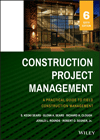Anchorage Port Expansion Problems Spark Dissension on Project Team

The $700-million Port of Anchorage expansion project is stalled in court, where the engineer says its design is not to blame.
PND Engineers Inc., a Seattle-based firm with offices in Alaska, designed the 135-acre expansion using the open-cell sheet-pile style to limit corrosion and persistent ice buildup on pile-supported docks. The design drives steel sheets into U-shaped cells, which are backfilled with earth and gravel to create new land.
In March, Anchorage sued PND, alleging a "negligent" and "unusable" design. The suit claims the "plaintiff will have to reconstruct the port using a completely different design and construction method."
Contractor West Construction Co., a member of a losing team that bid on the original project, says contentions delineated in its bid protest proved accurate.
PND publicly asserts that construction, not design, is to blame for damage and delays. "The one team that came in as the low bid—their means and methods were not appropriate to the job at hand," says John Pickering, PND president.
Anchorage Mayor Dan Sullivan tells ENR that, with legal action of this magnitude, the city's attorneys cast a wide net initially and certain players may fall out of the suit at some point.
Construction started in 2008. Integrated Concepts and Research Corp. (ICRC), which also is named in the March lawsuit for "breach of contract" along with CH2M Hill Alaska Inc. (then known as Veco Alaska Inc.), was responsible for the work. By 2009, inspections showed extensive damage to the sheets, and the subcontracts for contractors QAP and MKB Constructors were terminated. West was hired in 2010 to help fix the damage, successfully installing piles where the other contractors couldn't. ICRC's contract was terminated in May 2012. Efforts to reach ICRC were unsuccessful.
An Army Corps of Engineers study, based on a report by subcontractor CH2M Hill, calls the PND design "unsuitable." Even if construction issues were addressed, the corps notes, the design does not adequately address seismic concerns. PND refutes the claim, saying CH2M Hill didn't accurately portray the site and that multiple previous analyses contradict the consultant's report.
Now, to settle the dispute, Anchorage is commissioning a forensic review to check both sides' claims, Sullivan says. "The report will give a good independent, unbiased opinion on whether the suitability report is correct," he says. Sullivan expects that report in about four months.




